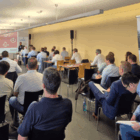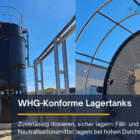A dewatering plant refers to a plant or system specifically designed to remove water from sludges or liquid-solid mixtures. Such plants are a key component in industrial wastewater treatment and are used in numerous industries, including the food and beverage, chemical and pharmaceutical industries, metal processing and municipal wastewater treatment plants. The main objective of a dewatering plant is to increase the dry solids concentration of the sludge in order to reduce the volume and weight for transportation and disposal. In addition, a high dry matter content can facilitate further utilization, for example for energy generation.
Table of contents
Functionality and components of a drainage system
Dewatering in industrial and municipal processes is typically carried out using mechanical separation methods based on pressure, centrifugal force or filtration. The choice of the right dewatering technology depends on several factors, including the composition of the sludge, the desired dry substance concentration and the specific requirements of the operation.
Main components and operating principles
1st conditioning unit:
- As a rule, the sludge is conditioned before dewatering by adding flocculants or precipitants to agglomerate the solid particles and facilitate the separation of liquids and solids. This chemical pre-treatment is crucial for efficient dewatering as it enables the formation of a filterable sludge.
2. mechanical drainage units:
Mechanical dewatering units include various types such as chamber filter presses, belt filter presses, screw presses and decanters. Each of these devices has specific advantages and disadvantages, depending on the sludge properties and desired degree of drying:
a) Decanter:
In a decanter, the sludge is dewatered in a rotating drum at high speed. This technology is well suited to continuous processes and sludges that need to achieve a medium to high dry substance concentration.
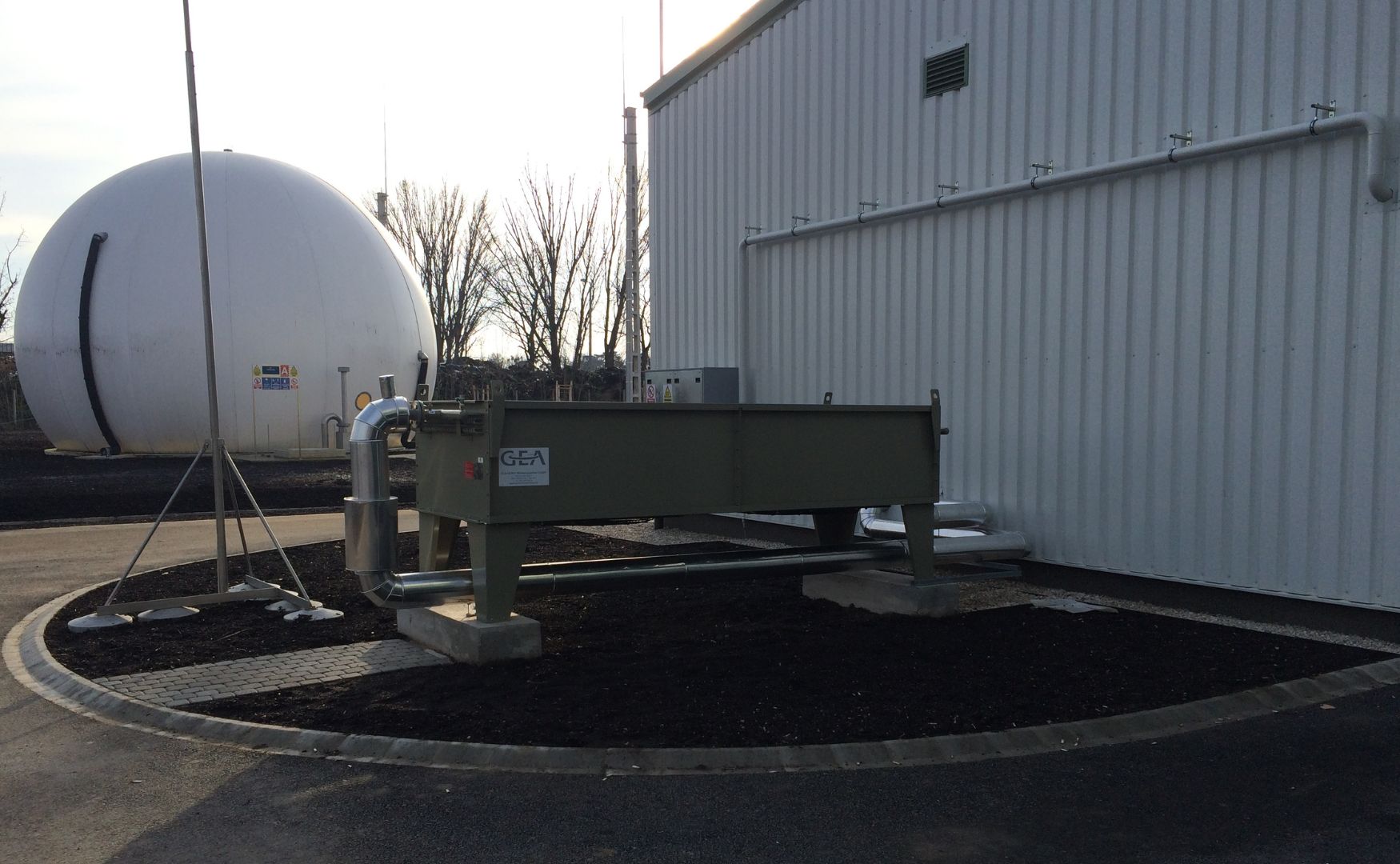
Photo: Photo of a decanter for dewatering sewage sludge from our ALMA BHU GMR biogas plant
b) Chamber filter press:
Uses high pressure to press the water through a filter cloth and produce a dry filter cake. It is particularly suitable for sludge with a high solids density and enables high dry substance contents.
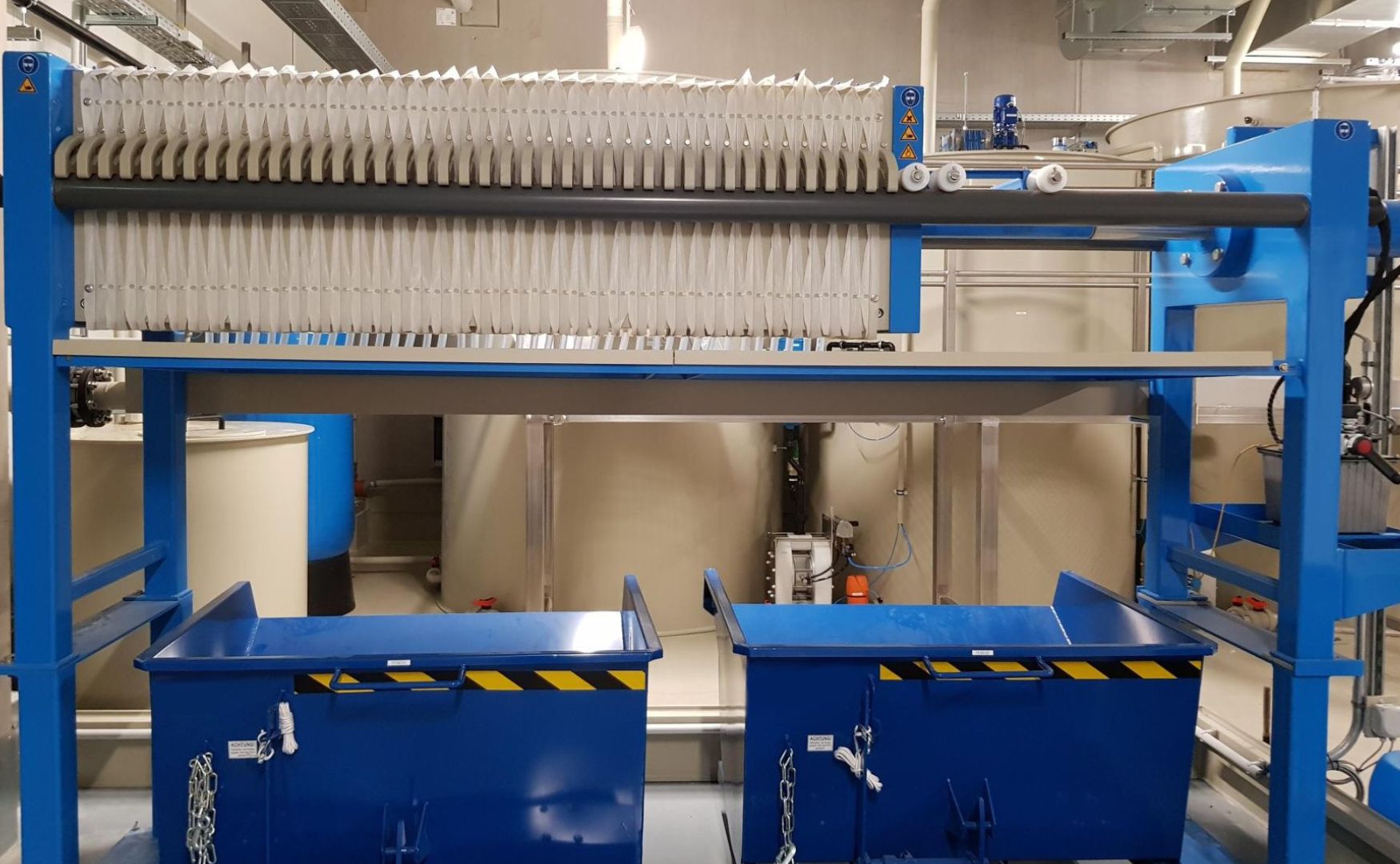
c) Screw press:
A screw system presses the sludge against a resistance, forcing the water out of the pores of the sludge. These devices are robust and provide a continuous dewatering process.
d) Belt filter press:
Here, the sludge is pressed onto a belt that moves through a series of rollers and separates the water. Belt filter presses are particularly suitable for large sludge volumes and achieve moderate dry substance values.
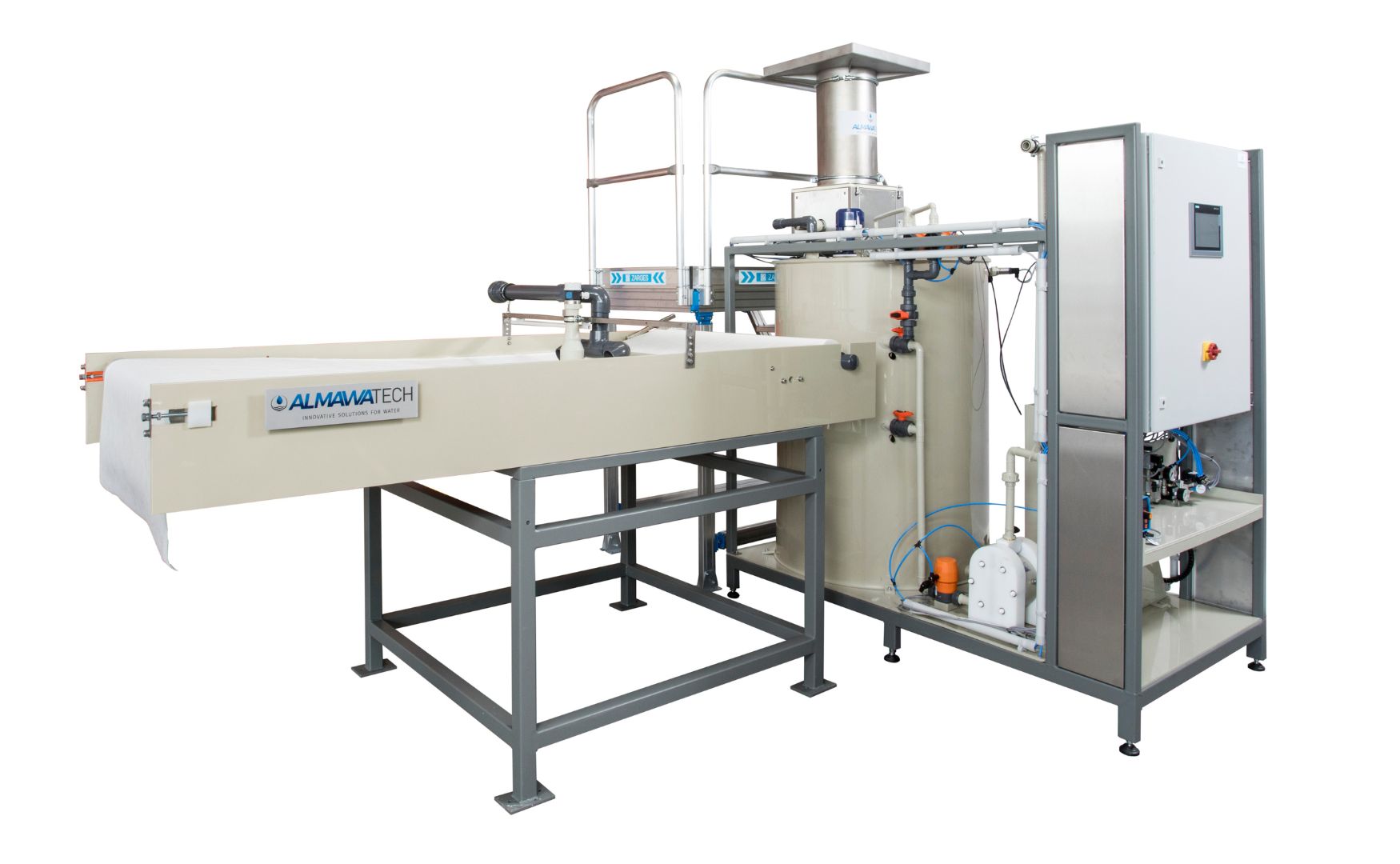
Photo: Compact precipitation and flocculation system ALMA CP Compact with belt filter
3. filtration systems and filter media:
- The filtering process is carried out using special filter cloths or membranes that are matched to the particle size and composition of the sludge. These filter media are crucial for the efficiency of the system and ensure that only the water can escape while the solids are retained. The choice of filter media and its regular cleaning and maintenance are critical to the performance of the system.
4. control and regulation system:
- Modern dewatering systems are often equipped with automated control and regulation systems that monitor and adjust the dewatering process. They record parameters such as pressure, throughput and dry matter content and enable flexible adjustment of the operating parameters to ensure high operational efficiency.
Technical background and process optimization
Optimal dewatering requires a deep understanding of sludge properties and physico-chemical processes. The mechanical separation of water and solids is influenced by factors such as viscosity, particle size distribution and solids concentration. Technical optimization options include
Setting the pressure and operating parameters:
- With chamber filter presses and other pressure-based dewatering methods, the pressure can be adjusted to achieve the maximum dry substance content in the filter cake. Higher pressure generally leads to drier sludge, but also requires higher energy input.
Conditioning agent and flocculant:
- The addition of chemicals such as polymers and coagulants ensures that particles in the sludge agglomerate and can be separated more easily. These agents improve the separability of the solids and reduce the energy required for dewatering.
Optimization of the filter media and cloth composition:
- The choice of filter cloth has a significant influence on the filtration rate and the degree of dewatering. Fine-pored cloths are suitable for smaller particle sizes, but slower in filtration, while coarse-pored cloths enable fast filtration rates, but only work effectively with larger particles.
Automated monitoring and process control:
- Modern dewatering systems are equipped with sensors that monitor important operating data such as dry substance concentration, pressure and flow rate in real time. By using online measurements and automatic control systems, operating costs can be reduced and efficiency increased.
Challenges and innovations in drainage technology
Energy consumption: Mechanical dewatering methods, especially at high pressures and in thermal systems, require considerable amounts of energy. The use of energy-efficient technologies and regular optimization of operating parameters are necessary to minimize operating costs.
Disposal of the filter cake: Depending on industrial waste legislation, the filter cake must be disposed of safely, especially if it contains hazardous substances. Efficient dewatering helps to reduce the volume and lower disposal costs.
Conclusion
Dewatering systems are essential for the efficient and environmentally friendly handling of industrial and municipal sludge. The mechanical separation of water and solids significantly reduces the volume of waste, which minimizes transport and disposal costs. Modern dewatering technologies and the precise control of operating parameters enable cost-efficient and application-specific sludge dewatering that meets the high demands of industry. The development of energy-efficient systems and automated control technologies will continue to promote economic efficiency and sustainability in dewatering technology.
For further information on our products, please feel free to contact us at any time!






